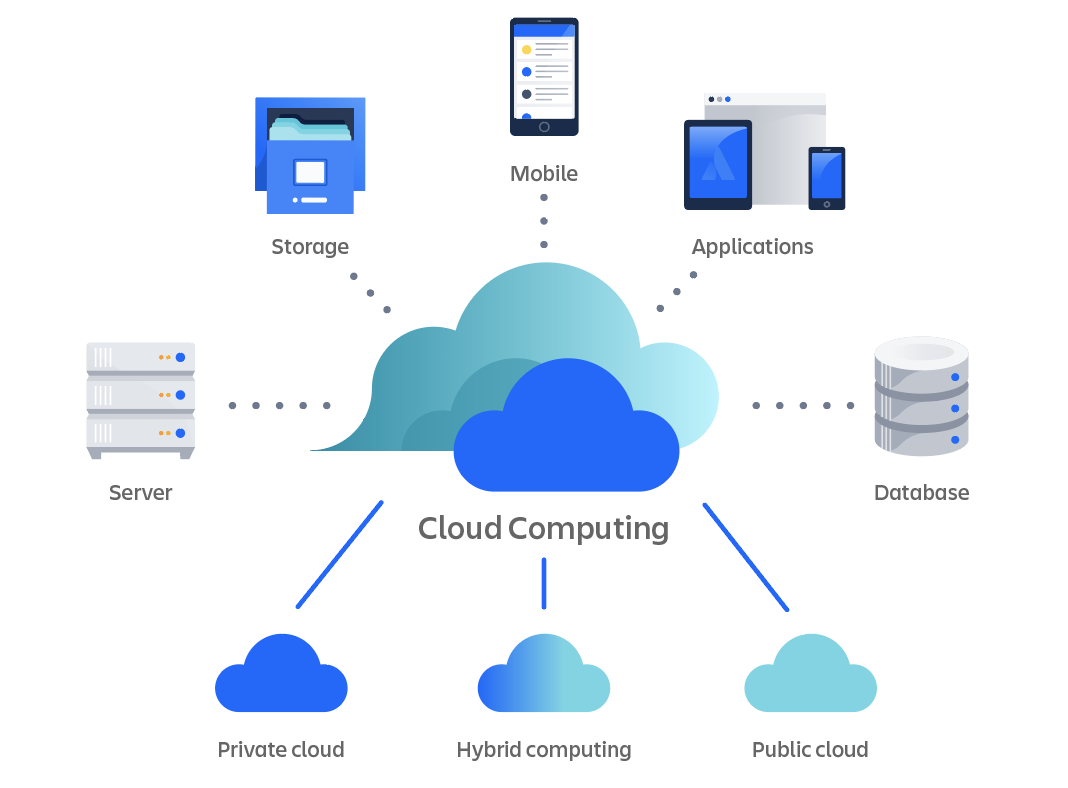Accomplish More with LinkDaddy Cloud Services: Enhancing Your Cloud Services Press Release Technique
Accomplish More with LinkDaddy Cloud Services: Enhancing Your Cloud Services Press Release Technique
Blog Article
Simplify Your Framework With Cloud Solutions
As organizations browse the ever-evolving landscape of modern technology and information monitoring, the duty of cloud services in streamlining facilities has actually come to be increasingly famous. Just how can organizations successfully browse this shift and really open the potential of cloud solutions for streamlining their framework?
Benefits of Cloud Services
Cloud services provide a streamlined method to handling IT facilities, providing services with scalability, flexibility, and cost-efficiency. Among the essential advantages of cloud solutions is the scalability they use. Organizations can quickly scale their sources up or down based on need, guaranteeing they only pay for what they utilize. This flexibility is particularly beneficial for services with changing requirements or those experiencing growth.
Furthermore, cloud services get rid of the requirement for services to invest in expensive equipment and software program. This cost-efficiency is a considerable advantage, specifically for little to medium-sized enterprises aiming to decrease ahead of time costs. By utilizing cloud services, organizations can access high-quality IT resources without the hefty cost related to traditional infrastructure setups.
Furthermore, cloud services supply businesses with the versatility to access their information and applications from anywhere with an internet connection. This degree of ease of access boosts collaboration among teams, makes it possible for remote job, and increases overall efficiency. The versatility offered by cloud services empowers services to adapt promptly to changing market conditions and customer demands.
Expense Financial Savings and Scalability
Along with the functional advantages highlighted earlier, the combination of cloud services into a business's facilities yields considerable expense financial savings and boosted scalability. Cloud solutions use a pay-as-you-go version, enabling companies to scale resources up or down based on current requirements, consequently preventing the expenses related to keeping excess capacity. This flexibility enables companies to adapt rapidly to varying demands without sustaining unnecessary expenditures.
Moreover, cloud services remove the need for ahead of time financial investments in software and hardware, lowering capital investment. Business expenses are also lessened as business no longer require to take care of and preserve physical servers, resulting in reduced power usage and IT staffing costs. In addition, cloud services provide automated updates and maintenance, guaranteeing that the infrastructure continues to be secure and current without needing hands-on interventions.
Boosted Safety Steps
Implementing strict safety and security actions is paramount when integrating cloud solutions right into a business's framework to secure sensitive information and guarantee compliance with sector guidelines. Cloud service providers use improved safety and security attributes such as data security, firewall security, and multi-factor verification to mitigate cybersecurity risks. File encryption helps protect data both at remainder and en route, ensuring that only licensed customers can access delicate details. Firewalls serve as a barrier between exterior hazards and inner networks, surveillance and managing incoming and outward bound network traffic. Multi-factor verification includes an extra layer of safety and security by needing users to offer several types of confirmation before accessing the cloud services.
Additionally, normal protection audits and compliance assessments aid make certain and determine susceptabilities adherence to market requirements. Learn More Business can additionally take advantage of attributes like automated security updates and real-time danger surveillance offered by cloud service carriers. By prioritizing protection procedures and staying positive in addressing possible dangers, businesses can with confidence take advantage of cloud services while safeguarding their beneficial data from unapproved access or breaches.
Transitioning to Cloud Framework
To successfully integrate cloud solutions right into a company's facilities, a structured method that addresses the change towards cloud-based options is necessary. Transitioning to cloud framework involves cautious preparation and execution to guarantee a smooth movement procedure. The initial step is to evaluate the existing infrastructure and figure out which applications and systems appropriate for movement to the cloud. This examination should consider variables such as data sensitivity, conformity demands, and efficiency needs.
Once the evaluation is total, a migration strategy should be established. This method needs to detail the timeline, sources, and duties for relocating each part to the cloud. It is important to interact this plan clearly to all stakeholders to make certain placement and decrease disturbances throughout the shift.
During the migration surveillance, procedure and screening are essential to identify and resolve any kind of problems without delay. Routine checkpoints should be developed to track development and make needed adjustments. In addition, training for employees on using cloud solutions should be supplied to guarantee an effective transition and take full advantage of the benefits of the new framework.
Finest Practices for Cloud Fostering
Successful adoption of cloud solutions hinges on the critical positioning of i thought about this business purposes with technological capacities and organizational readiness. To make sure a smooth change to the cloud, organizations must begin by performing a detailed analysis of their current facilities and determining which workloads are best fit for cloud movement. It is important to entail crucial stakeholders from different departments in the decision-making procedure to obtain buy-in and deal with any kind of issues beforehand.
Another ideal method for cloud fostering is to focus on security and compliance. Organizations needs to meticulously evaluate the safety procedures provided by cloud service providers and make sure that their information is safeguarded according to market criteria and governing needs. Executing robust information encryption, accessibility controls, and regular safety audits can assist minimize risks linked with cloud fostering.

Final Thought

As services browse the ever-evolving landscape of innovation and information management, the role of cloud solutions in simplifying facilities has actually come to be progressively prominent - linkdaddy cloud services. Exactly how can organizations effectively navigate this shift and absolutely unlock the potential of cloud services for streamlining their framework?
Cloud services provide a streamlined technique to handling IT facilities, supplying organizations with flexibility, scalability, and cost-efficiency. By making use of cloud solutions, businesses can access high-grade IT resources without the hefty price tag connected with conventional facilities configurations.
To make sure a smooth transition to the cloud, companies need to start by carrying out a comprehensive evaluation of their existing framework and recognizing which workloads are best suited for cloud movement.
Report this page